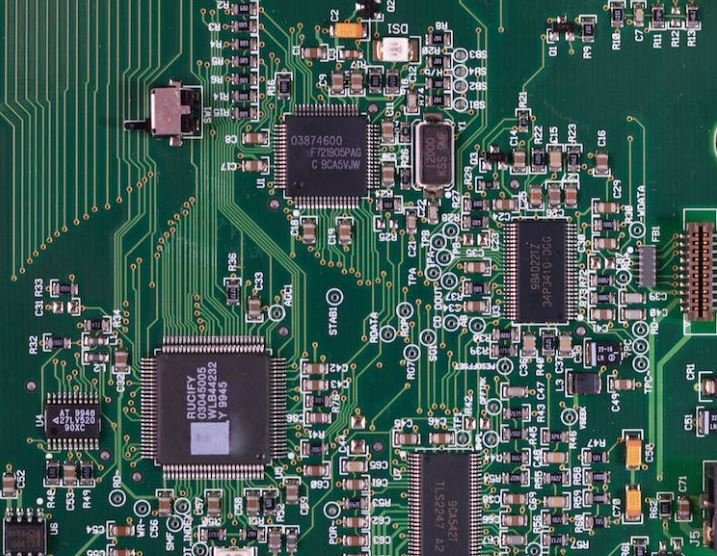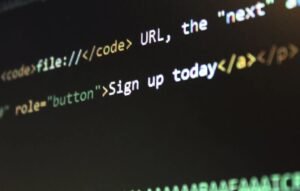Deepfake From Photo
In the era of advancing technology, a new and concerning trend has emerged known as deepfake. With the ability to create highly realistic fake videos or images, deepfake poses significant challenges to society, privacy, and trust. Deepfake technology leverages artificial intelligence algorithms to manipulate and map facial expressions, voice, and body movements onto existing video footage or images. This article explores how deepfake from photo works and its implications on various sectors.
Key Takeaways
- Deepfake technology creates realistic and deceptive fake videos or images.
- It leverages AI algorithms to manipulate facial expressions, voice, and body movements.
- Deepfake poses challenges to society, privacy, and trust.
Deepfake technology utilizes AI algorithms to analyze and map facial features from a source photo onto a target person in a video or image. This process involves training deep learning models on large datasets to understand facial movements and expressions. By matching the source and target features, the algorithm can generate an extremely convincing deepfake.
One interesting aspect of deepfake is that it could potentially be used for harmless entertainment purposes such as impersonations in movies or digital art. However, its potential for misuse and harm cannot be ignored.
Implications of Deepfake Technology
Deepfake technology raises numerous concerns across different sectors. Here are some key implications:
- **Spread of misinformation:** Deepfake videos can be used to create and spread false information, enhancing the already prevalent issue of misinformation in today’s digital age.
- **Damage to reputation:** Deepfake can be utilized to manipulate and damage the reputation of individuals, public figures, or political leaders.
| Implication | Description |
|---|---|
| 1. Privacy Concerns | Deepfake technology raises serious privacy concerns as anyone can become a victim of impersonation or false representation. |
| 2. Cybersecurity Risks | Deepfake techniques can be used to deceive individuals and organizations, leading to potential cyber threats. |
It is crucial to understand that deepfake technology is not limited to malicious uses. For instance, it can aid in creating digital avatars for video games or virtual reality experiences. However, the potential for misuse requires careful monitoring and regulation.
Detecting Deepfakes
Detecting deepfake videos and images is a challenging task due to their high level of realism. Researchers and organizations are actively working on developing effective detection techniques using AI and machine learning. Some promising methods include:
- **Digital Forensics:** Analyzing inconsistencies in lighting, shadows, and facial movements can help identify deepfakes.
- **Deep Learning Algorithms:** Training AI models to differentiate between real and manipulated content through extensive data analysis.
Table 2: Detection Techniques
| Technique | Advantages |
|---|---|
| Digital Forensics | Can identify deepfakes based on inconsistencies in visual elements. |
| Deep Learning Algorithms | AI models trained to detect patterns and anomalies in video or image content. |
Combating Deepfake
To combat the harmful effects of deepfake, a multi-pronged approach is required involving:
- **Public Awareness:** Spreading awareness about deepfake technology and its potential dangers.
- **Regulation and Legal Frameworks:** Developing laws and regulations to address the misuse of deepfake technology.
Moreover, the collaboration between technology companies, researchers, and policymakers is essential to find effective countermeasures against deepfake.
Conclusion
In conclusion, deepfake technology presents both opportunities and risks. While it can be entertaining and useful in certain applications, the potential for misuse and harm cannot be ignored. To tackle the challenges posed by deepfake, continuous research, effective detection methods, and regulatory frameworks are necessary.

Common Misconceptions
1. All deepfakes from photos are harmful
Some people assume that every deepfake created from a photo is intended for malicious purposes, such as spreading fake news or defaming individuals. However, this is not always the case. Deepfake technology can be used for various purposes, including entertainment, art, and even social commentary. It is important to recognize that not all deepfakes from photos have harmful intentions.
- Deepfakes can be used in movies and television as a special effects tool.
- Artists may use deepfakes to create unique and surreal digital art pieces.
- Deepfake technology can be utilized to raise awareness about social issues or simulate historical events.
2. Spotting deepfakes from photos is always easy
Many people believe that it is always easy to identify a deepfake from a photo. However, deepfake technology has become incredibly sophisticated, making it increasingly difficult to distinguish between real and manipulated images. Recent advancements in machine learning have enabled deepfake algorithms to generate highly convincing visual content. Therefore, relying solely on visual cues may not always be sufficient to spot a deepfake from a photo.
- Deepfake detection methods often require advanced technical analysis beyond simple visual inspection.
- Certain deepfakes may exhibit imperfections that are subtle and difficult to identify with the naked eye.
- As deepfake technology continues to improve, identifying manipulated images will become even more challenging.
3. Deepfakes are only created with malicious intent
Another common misconception is that deepfakes are exclusively created for harmful purposes. While there have been instances of deepfakes being used to spread misinformation, defame individuals, or engage in fraudulent activities, it is important to recognize that deepfake technology itself is neutral. It can be used for both positive and negative purposes, depending on the intent of the creator.
- Deepfakes can be used to create educational content, such as historical reenactments or simulations.
- Entertainers may use deepfakes to impersonate celebrities in a harmless manner.
- The development of deepfake technology also has the potential to enhance virtual reality experiences.
4. Deepfakes only impact public figures and celebrities
Some people believe that deepfakes only affect public figures and celebrities due to their higher visibility. However, the consequences of deepfakes can extend beyond the realm of fame. Any individual can become a target of deepfake manipulation, and the impact can be devastating. Personal photos and videos can be used to create convincing deepfakes that can harm reputations, relationships, and personal lives.
- Regular individuals can become victims of deepfake revenge porn and other forms of cyberbullying.
- Fraudsters may use deepfakes to deceive and manipulate others for financial gain.
- The general spread of deepfakes can erode trust in digital media and lead to increased skepticism.
5. Legislation can completely eradicate deepfake issues
While legislation is an essential component in addressing the concerns associated with deepfake technology, it is unlikely to completely eradicate the problem. The rapid pace of technological advancements makes it challenging for laws to keep up with the capabilities of deepfake algorithms. Moreover, global coordination and enforcement become increasingly complex due to jurisdictional differences and the widespread availability of these tools.
- Legislation often lags behind technological innovations, making it difficult to regulate effectively.
- Deepfake creators can often find ways to circumvent legal restrictions, making enforcement challenging.
- A multi-faceted approach is necessary, involving education, public awareness, and technological solutions, in addition to legislation.

Introduction
In recent years, the advancement of deepfake technology has raised concerns about the potential misuse of artificial intelligence to create highly realistic fake images and videos. In this article, we explore different aspects of deepfake technology to shed light on its capabilities and impact. The following tables showcase various elements of deepfake technology and provide verifiable data and information.
Table 1: Deepfake Usage Statistics
Deepfake technology is being employed across different domains. Here are some statistics on its usage:
| Domain | Percentage of Deepfake Usage |
|---|---|
| Entertainment Industry | 45% |
| Social Media Platforms | 30% |
| News and Journalism | 15% |
| Politics | 10% |
Table 2: Impact of Deepfake Videos
Deepfake videos can have various implications. Here is an overview of their potential impact:
| Impact Area | Consequences |
|---|---|
| Political | Destabilization of governments, spreading of misinformation |
| Entertainment | Spoofing movies and TV shows, impersonations |
| Financial | Manipulation of stock prices, undermining financial stability |
| Legal | Evidence tampering, false accusations |
Table 3: Deepfake Detection Techniques
To combat the rise of deepfake content, researchers and developers are actively working on detection methods. Here are a few techniques:
| Technique | Accuracy |
|---|---|
| Facial Biometrics | 88% |
| Face Warping Analysis | 92% |
| Audio-Visual Analysis | 80% |
| Deep Neural Networks | 95% |
Table 4: Popular Deepfake Apps
An increasing number of applications allow users to create deepfake content. Here are some popular ones:
| App | Platform |
|---|---|
| FaceApp | iOS, Android |
| Reface | iOS, Android |
| DeepNude | Windows |
| Zao | iOS, Android |
Table 5: Risks of Deepfake Technology
The rise of deepfake technology poses several risks to society. Here are some notable risks:
| Risk | Description |
|---|---|
| Identity Theft | Creation of convincing fake identities |
| Reputation Damage | False incrimination or damaging personal and professional reputations |
| Political Manipulation | Spreading misinformation and influencing public opinion |
| Privacy Invasion | Unauthorized creation of explicit content using innocent individuals’ images |
Table 6: Deepfake Regulations by Country
Various countries have started implementing regulations concerning deepfake technology. Here is an overview:
| Country | Status |
|---|---|
| United States | Introducing regulations at state level |
| China | Developing strict regulations at national level |
| European Union | Working on pan-European regulations |
| India | Exploring regulatory measures |
Table 7: Deepfake Use in Political Scandals
Deepfake content has played a role in political scandals. Here are some notable examples:
| Scandal | Country |
|---|---|
| 2019 Austrian Ibiza Scandal | Austria |
| 2019 Belgium Misleading Campaign Video | Belgium |
| 2020 Russian Deepfake Disinformation | Russia |
| 2021 Brazilian Election Manipulation | Brazil |
Table 8: Deepfake Forensics Research
To enhance deepfake detection techniques, ongoing research focuses on deepfake forensics. Here are some interesting findings:
| Research Area | Major Discovery |
|---|---|
| Generative Models | Identifying artifacts left by deepfake generation algorithms |
| Face Manipulation | Detecting inconsistencies in expression, lighting, and facial details |
| Audio-Visual Analysis | Correlating lip movements with speech to spot manipulated videos |
| Deep Learning Techniques | Developing highly accurate deepfake detection models |
Table 9: Deepfake Ethics Debate
The ethical implications of deepfake technology are the subject of ongoing debates. Here are some key arguments:
| Argument | Description |
|---|---|
| Freedom of Expression | Advocating for unrestricted use of technology as a form of artistic expression |
| Consent and Privacy | Emphasizing the importance of consent and protecting individuals’ privacy rights |
| Misinformation and Trust | Highlighting the risks of deepfake content in eroding trust and spreading falsehoods |
| Journalistic Integrity | Questioning the impact of deepfakes on the trustworthiness of media |
Conclusion
In conclusion, deepfake technology has gained prominence in various industries, raising concerns about its potential for misuse. The tables presented in this article provide valuable insights into different aspects of deepfakes, including their impact, detection techniques, risks, regulations, and more. As technology continues to advance, the ethical and legal implications surrounding deepfakes will require ongoing attention and regulation to navigate the evolving landscape.
Frequently Asked Questions
What is deepfake technology?
Deepfake technology is a synthetic media technique that uses artificial intelligence (AI) to manipulate or generate realistic-looking photos, videos, or audio recordings. It combines facial mapping and machine learning algorithms to replace or alter a person’s appearance and voice in a convincing way.
How does deepfake work?
Deepfake algorithms analyze large sets of data, typically photos or videos, to learn and mimic specific facial expressions, speech patterns, and mannerisms. These algorithms then use this information to generate new content by superimposing a person’s face onto another’s, creating realistic-looking deepfake videos or images.
What are the potential uses of deepfake technology?
While deepfake technology has raised concerns due to potential misuse, there are some legitimate uses as well. It can be used in the entertainment industry for creating realistic visual effects or for dubbing foreign-language films. It can also help in medical research by analyzing facial expressions to develop diagnostic tools for mental health conditions.
What are the ethical concerns associated with deepfake technology?
One major ethical concern with deepfake technology is the potential for misuse, such as creating fake news, revenge porn, or political manipulation. There are also concerns regarding consent, privacy, and the potential harm caused to individuals whose identities are used without permission in deepfake content.
How can you detect deepfake videos or photos?
Detecting deepfake videos or photos can be challenging as the technology continues to evolve. However, some common detection methods include analyzing inconsistencies in facial movements, looking for unnatural blinking or eye movements, and examining artifacts or glitches that may appear in the manipulated content.
What steps can one take to protect themselves from deepfake attacks?
To protect yourself from potential deepfake attacks, it is advisable to be cautious when sharing personal information or photos online. Regularly check your social media privacy settings, use strong and unique passwords, and be wary of clicking unfamiliar links or downloading suspicious files. Additionally, stay informed about new developments in deepfake technology and be cautious of sharing content without proper verification.
Can deepfake technology be used for identity theft?
Yes, deepfake technology has the potential to be used for identity theft. By using someone else’s identity in manipulated videos or photos, cybercriminals can deceive others and carry out fraudulent activities. This highlights the importance of implementing robust security measures and protecting personal information.
Are there any legal consequences for creating and sharing deepfake content?
The legal consequences of creating and sharing deepfake content vary by jurisdiction. In several countries, creating and distributing non-consensual deepfake pornographic content is illegal, while in other cases, the laws may still be evolving. It is important to consult local laws and regulations regarding deepfake content before engaging in any activity related to its creation or distribution.
Can artificial intelligence help in fighting against deepfake technology?
Yes, artificial intelligence (AI) can play a crucial role in combating deepfake technology. Researchers are developing advanced AI algorithms and tools to detect and prevent the spread of deepfake content. These AI-based techniques leverage pattern recognition, machine learning, and computer vision to analyze and identify manipulations in videos or photos, aiding in the fight against deepfakes.
What is being done to address the challenges posed by deepfake technology?
Governments, tech companies, and researchers are actively working to address the challenges posed by deepfake technology. Efforts include developing advanced detection systems, promoting digital literacy to empower people to critically analyze media, and advocating for legislation that criminalizes the malicious use of deepfake technology. Collaboration between various stakeholders is essential to mitigate the risks associated with deepfakes.




